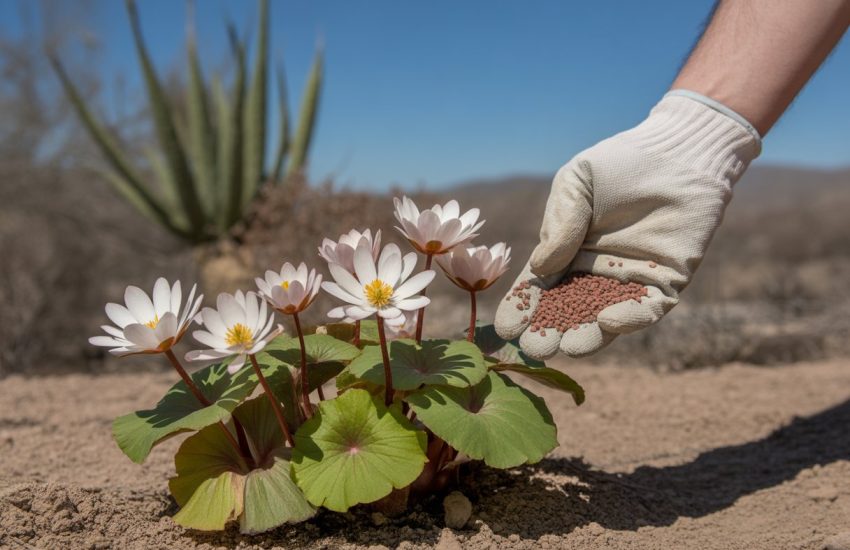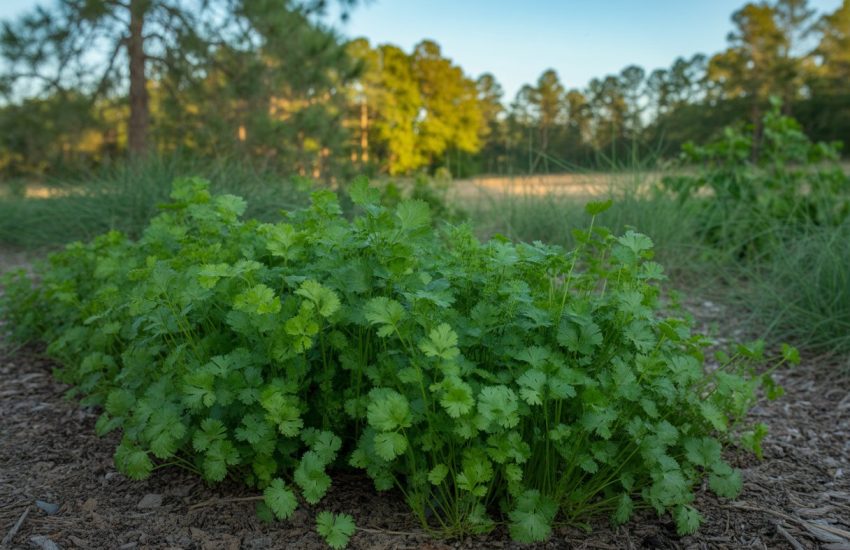Plant Bananas in Your Garden: Tips for a Successful Harvest
Bananas are a delicious and nutritious fruit that many people enjoy eating. However, not everyone knows that it is possible to grow bananas in their own garden. Planting bananas in your garden can be a fun and rewarding experience, and it is easier than you might think.
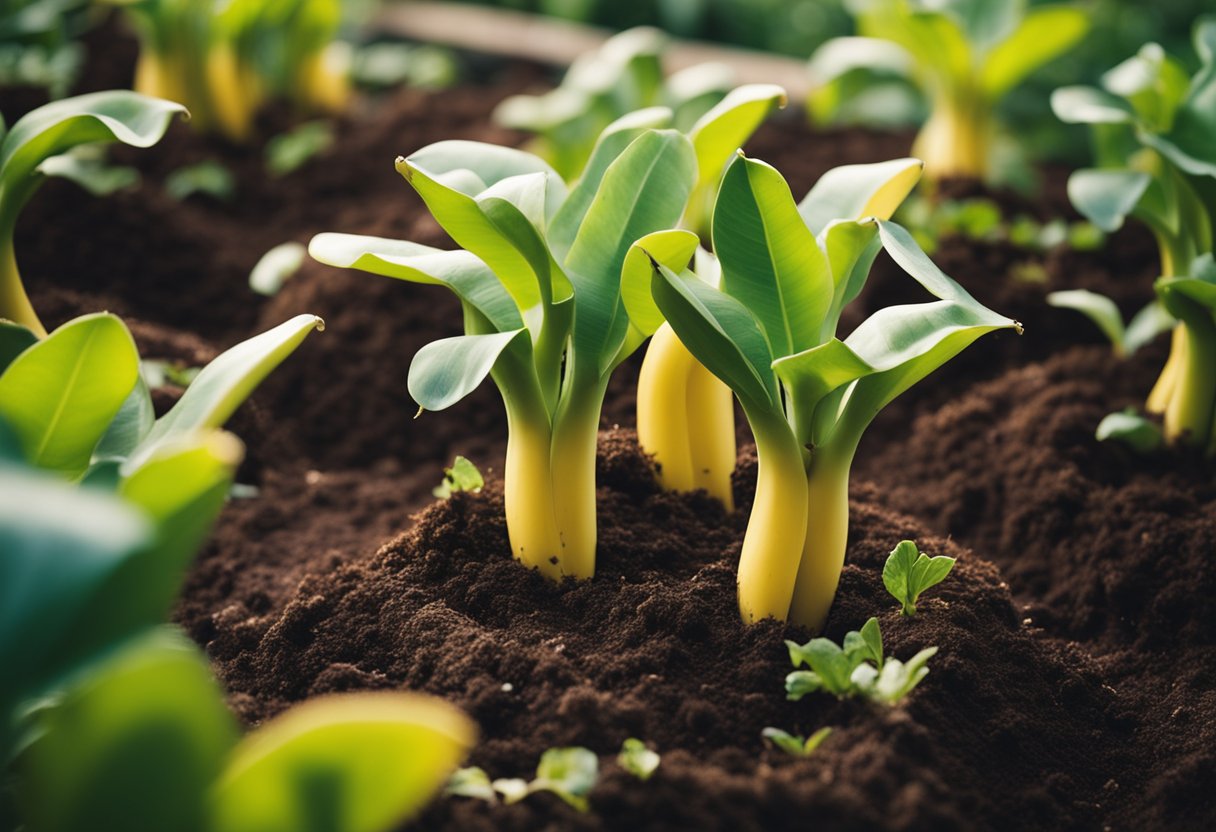
Bananas are tropical plants that thrive in warm, humid environments. They require plenty of sunlight and regular watering to grow properly. If you live in a region with a warm climate, you may be able to grow bananas in your garden with relative ease. However, even if you live in a cooler climate, it is still possible to grow bananas with a little extra effort. By choosing the right variety of banana and providing the right growing conditions, you can successfully grow bananas in your garden no matter where you live.
Choosing the Right Location
Understanding Sunlight Requirements
Banana plants require full sun to grow and produce fruit. It is essential to choose a location in your garden that receives at least 6-8 hours of direct sunlight per day. Avoid planting banana plants in areas that are shaded by trees or buildings, as this will hinder their growth and fruit production.
Assessing Soil Quality
Banana plants prefer well-draining soil that is rich in organic matter. Before planting, assess your soil quality to ensure that it is suitable for growing banana plants. If your soil is heavy or clay-like, consider adding compost or sand to improve drainage. Banana plants also require a pH level between 5.5 and 7.0, so it is important to test your soil and adjust the pH level if necessary.
Space Considerations for Banana Plants
Banana plants can grow up to 30 feet tall and require ample space to spread out. When choosing a location, ensure that there is enough room for the plants to grow without overcrowding. It is also important to consider the spacing between plants, as banana plants require at least 10-12 feet of space between each plant.
Overall, choosing the right location for your banana plants is crucial for their growth and fruit production. By understanding their sunlight requirements, assessing soil quality, and considering space limitations, you can create the optimal environment for your banana plants to thrive.
Preparing the Garden
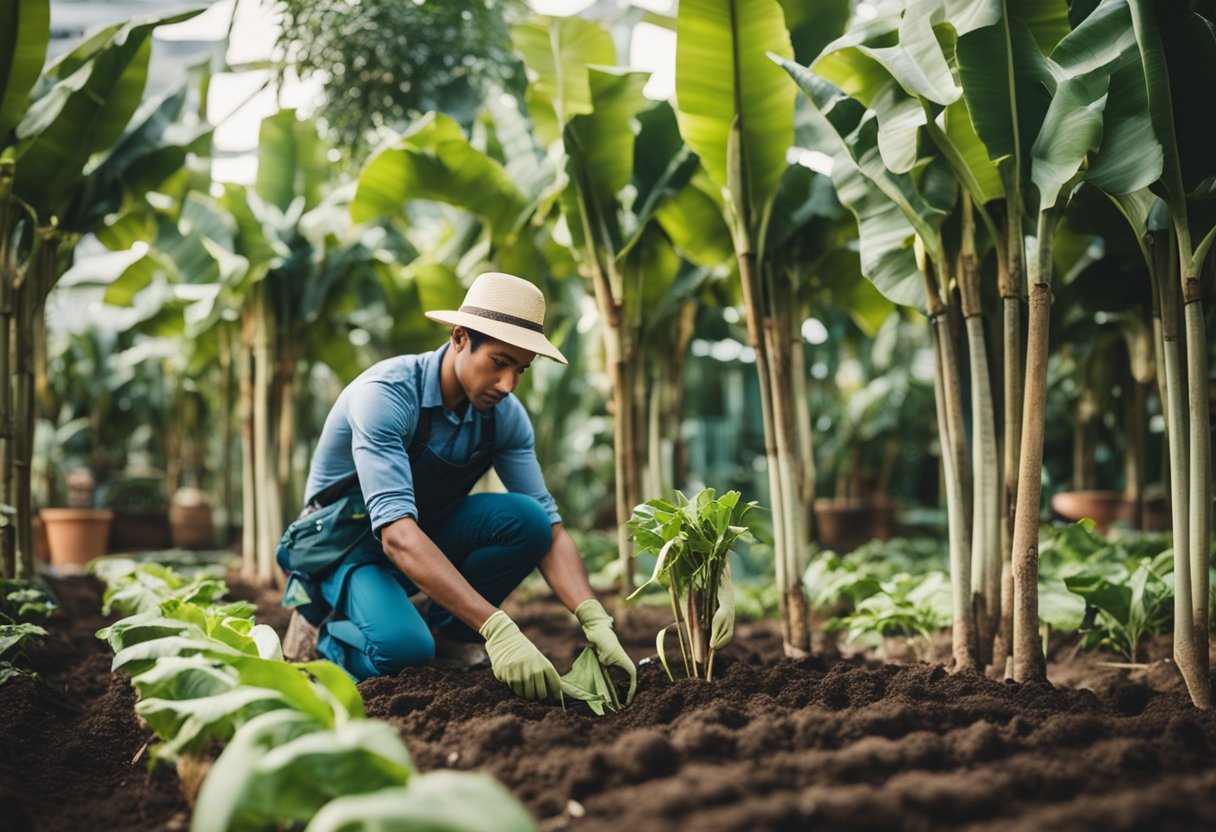
Soil Preparation and Amendments
Before planting bananas in your garden, it is essential to prepare the soil properly. The first step is to clear the area of any weeds or debris. Once the area is clear, it is time to amend the soil. Adding organic matter, such as compost, to the soil will improve its fertility and structure.
Bananas require fertile soil that is well-drained. If the soil in your garden is not well-drained, it is recommended to add sand or other amendments to improve drainage. Additionally, bananas require a pH level between 5.5 and 7.0. If the soil pH is too low, adding lime can raise it to the appropriate level.
Planting Distance and Arrangement
When planting bananas, it is important to space them correctly. The distance between each plant should be around 10 to 12 feet. This spacing allows the plants to grow and spread out without competing for resources.
Bananas should be planted in rows, with each row spaced around 12 to 16 feet apart. This arrangement allows for adequate sunlight and air circulation between the plants. It is also recommended to plant bananas in groups of at least three plants. This grouping ensures proper pollination and fruit production.
In terms of fertilization, bananas require a balanced fertilizer with equal amounts of nitrogen, phosphorus, and potassium. Additionally, bananas require magnesium and calcium for proper growth and fruit production. It is important to follow the manufacturer’s instructions when applying fertilizer to prevent over-fertilization, which can damage the plants.
Overall, preparing the garden for planting bananas requires proper soil preparation and amendments, as well as careful consideration of planting distance and arrangement. By following these guidelines and providing adequate fertilization, you can ensure a successful banana harvest in your garden.
Planting Banana Plants
The Planting Process
When it comes to planting banana plants, it is important to choose a sunny spot in the garden with well-draining soil. Banana plants require warm temperatures and plenty of sunlight to thrive. Before planting, it is important to prepare the soil by adding compost or well-rotted manure to improve soil fertility.
Once the soil is prepared, dig a hole that is twice the size of the root ball of the banana plant. Carefully remove the plant from its container, being careful not to damage the roots. Place the plant in the hole, making sure that the top of the root ball is level with the surrounding soil. Backfill the hole with soil and gently firm it down around the plant.
Watering After Planting
After planting, it is important to water the banana plant regularly to help it establish its roots. Water the plant deeply once or twice a week, depending on the weather conditions. During hot and dry weather, the plant may require more frequent watering.
It is also important to avoid overwatering the banana plant, as this can lead to root rot. To prevent this, make sure that the soil is well-draining and that excess water can drain away from the plant. Adding a layer of mulch around the base of the plant can also help to retain moisture in the soil and prevent water loss through evaporation.
By following these simple steps, anyone can successfully plant bananas in their garden and enjoy the delicious fruits that they produce.
Caring for Banana Plants

Watering and Moisture Management
Banana plants require regular watering to ensure healthy growth. They prefer a consistently moist soil, but overwatering can lead to root rot. It is important to monitor the soil moisture levels and adjust watering accordingly. During hot and dry periods, they may require more frequent watering. Mulching around the base of the plant can help retain moisture and regulate soil temperature.
Fertilization Schedule
Fertilizing banana plants is essential for healthy growth and fruit production. A balanced fertilizer with a higher potassium content is recommended. Fertilizer should be applied every 4-6 weeks during the growing season. It is important to follow the manufacturer’s instructions and not over-fertilize, as this can cause damage to the plant.
Pruning and Maintenance
Pruning banana plants is important for maintaining healthy growth and fruit production. Dead or damaged leaves should be removed regularly to prevent the spread of disease. It is also recommended to remove any suckers (smaller offshoots from the main plant) to promote larger fruit yields. In colder climates, it is important to protect the plant from frost damage by covering it with a blanket or tarp.
Overall, caring for banana plants requires regular attention to watering, fertilization, and pruning. With proper care, they can thrive and produce delicious fruit for years to come.
Protecting from Pests and Diseases

Common Banana Plant Pests
Banana plants are susceptible to a variety of pests, which can cause significant damage if left unchecked. Some of the most common pests that affect banana plants include aphids, mites, banana weevils, and snails. These pests can cause damage to the leaves, stems, and fruits of the plant, and can also spread diseases.
To prevent these pests from infesting your banana plants, it is important to keep the area around your plants clean and free of debris. Remove any fallen leaves or other plant material from the ground, as this can provide a breeding ground for pests. You can also use insecticidal soap or neem oil to control aphids and mites, and apply a pesticide specifically designed for banana weevils to prevent infestations.
Another effective way to prevent pests from infesting your banana plants is to attract beneficial insects to your garden. Ants, ladybugs, and lacewings are all natural predators of aphids and mites, and can help keep these pests under control. You can attract these insects by planting flowers and herbs that they are attracted to, such as marigolds, daisies, and fennel.
Disease Prevention and Control
In addition to pests, banana plants are also susceptible to a variety of diseases, including fungus and bacterial infections. These diseases can cause significant damage to the plant, and can even kill it if left untreated.
To prevent the spread of disease, it is important to keep your banana plants healthy and well-maintained. This means providing them with adequate water and nutrients, and pruning them regularly to remove any dead or diseased leaves or stems.
You can also use fungicides to prevent the spread of fungus, and apply a copper-based fungicide to prevent bacterial infections. It is important to follow the instructions on the label carefully when using these products, and to wear protective clothing and gloves to avoid exposure to the chemicals.
By taking these steps to protect your banana plants from pests and diseases, you can ensure that they will thrive and produce healthy, delicious fruit for years to come.
Adapting to Climate Conditions
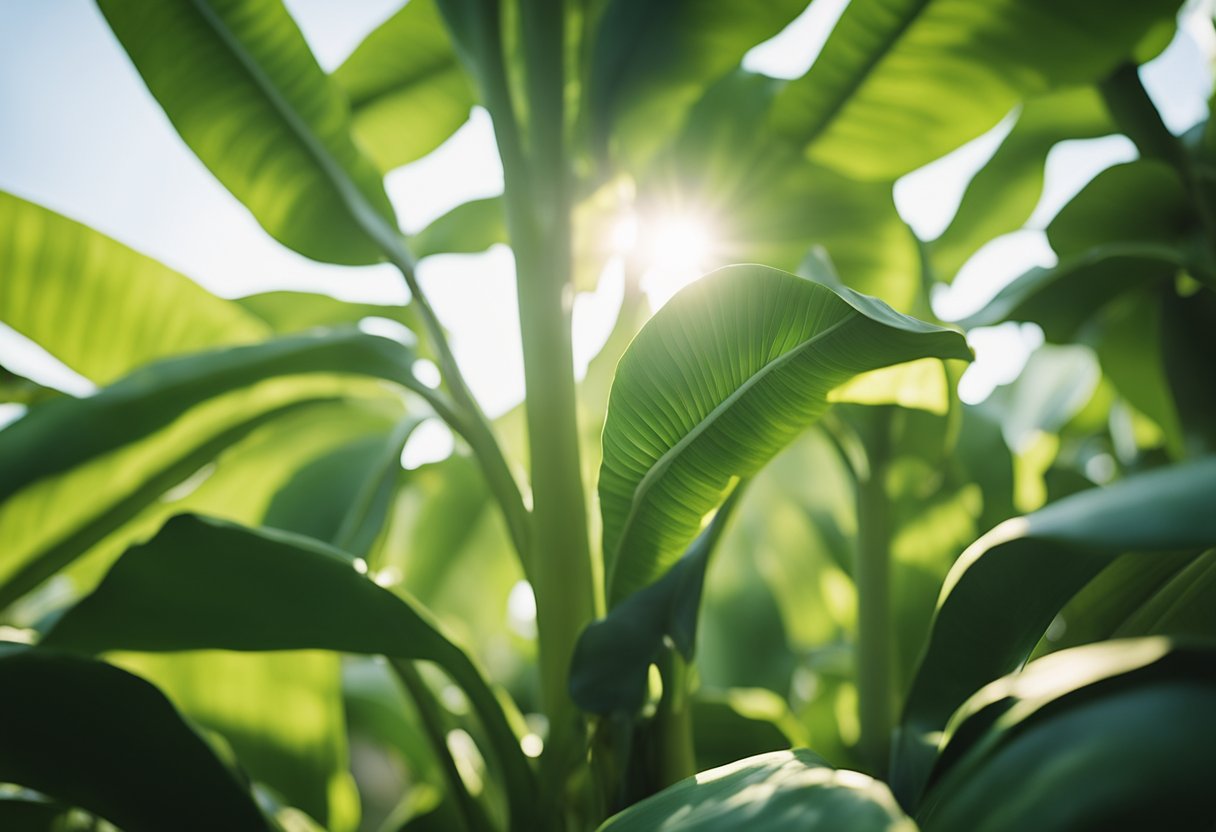
Dealing with Temperature Extremes
Bananas are tropical plants that thrive in warm climates with temperatures ranging from 77°F to 86°F. However, they can still grow in areas with cooler temperatures, as long as certain precautions are taken. If the temperature drops below 50°F, the plant will stop growing and the leaves will start to turn yellow. If the temperature drops below 32°F, the plant will die.
To protect the plants from frost, it is recommended to wrap the trunk with burlap or other insulating materials. Additionally, mulching the soil around the plant can help retain heat and prevent frost damage. It is also important to choose a location that is sheltered from strong winds, which can damage the leaves and make the plant more susceptible to frost.
Growing Bananas in Non-Tropical Climates
While bananas are typically grown in tropical climates, they can still be grown in non-tropical regions as long as certain conditions are met. The USDA zones for growing bananas range from 9 to 11, which means that they can be grown in areas with mild winters and warm summers.
To grow bananas in non-tropical climates, it is important to choose a location that receives plenty of sunlight and has well-draining soil. The soil should also be rich in organic matter and have a pH level between 5.5 and 7.0. It is also recommended to plant the bananas in a sheltered location, such as against a south-facing wall or in a greenhouse, to protect them from cold temperatures and strong winds.
In conclusion, growing bananas in non-tropical climates requires careful attention to temperature and climate conditions. With the right precautions and growing conditions, it is possible to successfully grow bananas in a variety of climates.
Harvesting and Storing Bananas
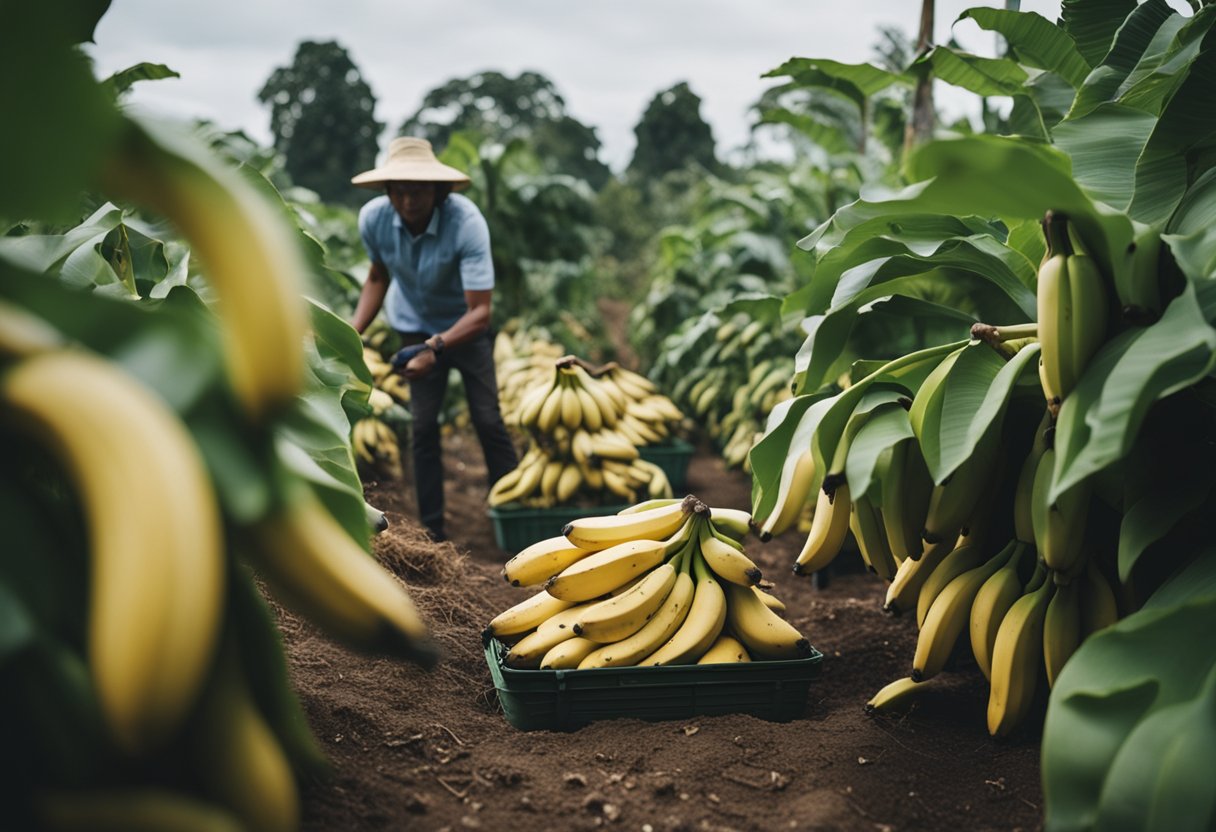
Recognizing Harvest Time
Harvesting bananas at the right time is crucial to ensure that the fruit is sweet and ripe. Bananas should be harvested when they are mature but still green. The fruit should be plump and rounded, with the ridges on the skin well-defined. If the ridges have begun to flatten out, the fruit is overripe and may be too soft and mushy.
Proper Harvesting Techniques
To harvest bananas, use a sharp knife to cut the stem of the bunch, leaving a few inches of stem attached to the fruit. Be careful not to damage the fruit or the plant. Once the bunch is cut, it should be carefully lowered to the ground to avoid bruising the fruit.
After harvesting, bananas should be stored in a cool, dry place. They should not be exposed to direct sunlight or extreme temperatures. Bananas will continue to ripen after they are harvested, so it is important to check them regularly and remove any fruit that has become overripe.
To extend the shelf life of bananas, they can be stored in a plastic bag with a few small holes to allow for air circulation. Adding an apple or a tomato to the bag can also help to speed up the ripening process.
In conclusion, harvesting and storing bananas requires careful attention to detail and proper technique. By following these guidelines, gardeners can enjoy sweet, ripe fruit for weeks to come.
Container and Indoor Banana Gardening
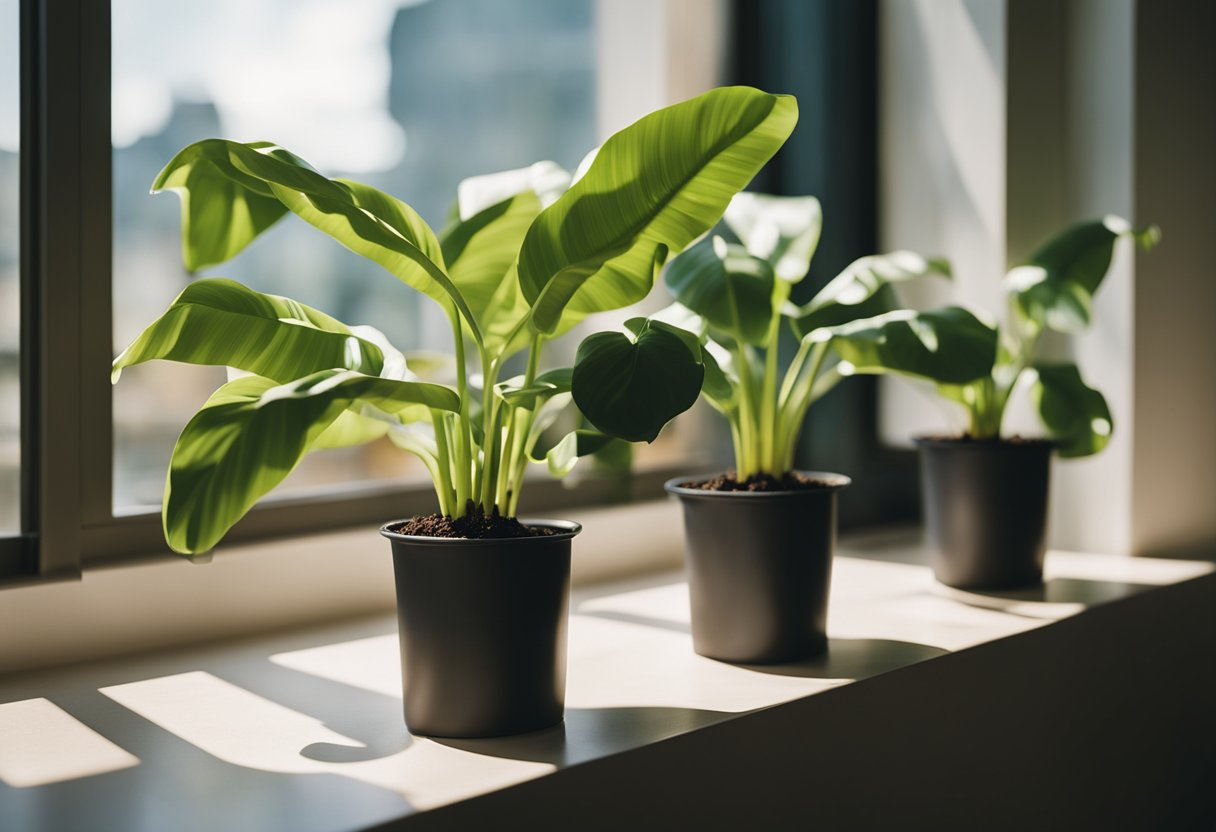
Selecting Containers for Banana Plants
When it comes to growing banana plants in containers, it is important to select the right pot size. The best option is to choose a pot that is at least 18 inches in diameter and 22 inches deep. The container should also have drainage holes to prevent waterlogging. A larger pot will provide enough space for the roots to grow and allow the plant to thrive.
Another important aspect to consider is the material of the container. Plastic and ceramic pots are popular choices for growing banana plants, as they are lightweight and easy to move around. However, terracotta pots are also a good option, as they are porous and can help regulate the soil moisture.
Indoor Banana Plant Care
Growing banana plants indoors requires a bit of extra care, as they need plenty of sunlight and humidity to thrive. It is recommended to place the plant in a south-facing window, where it can receive at least 6 hours of sunlight per day. If natural light is not available, artificial grow lights can be used to supplement the plant’s light needs.
Maintaining the right humidity level is also crucial for indoor banana plant care. Banana plants prefer a humid environment, so it is recommended to mist the leaves regularly or use a humidifier. Additionally, placing a tray of water near the plant can help increase the humidity levels.
When it comes to watering, it is important to keep the soil moist but not waterlogged. Overwatering can lead to root rot and other problems. It is recommended to water the plant when the top inch of soil feels dry to the touch.
In conclusion, growing banana plants in containers and indoors can be a rewarding experience. By selecting the right pot size and material, and providing adequate sunlight, humidity, and water, anyone can successfully grow a dwarf cavendish banana plant in their indoor space.
Banana Plant Varieties

Choosing a Variety for Your Garden
When it comes to planting bananas in your garden, it is important to choose a variety that is suitable for your climate and soil type. Banana plants are available in a variety of sizes, from dwarf varieties that grow only a few feet tall to larger varieties that can reach up to 30 feet in height.
It is also important to consider the flavor and texture of the bananas that each variety produces. Some varieties, such as the Cavendish, are popular for their sweet and creamy flavor, while others, such as the Lady Finger, are known for their smaller size and slightly tart taste.
Popular Banana Plant Varieties
There are many different varieties of banana plants to choose from, but some of the most popular include:
Cavendish: This variety is known for its sweet and creamy flavor and is the most commonly grown banana in the world. It is also resistant to the Panama disease, which has devastated other banana varieties in the past.
Lady Finger: Also known as the “baby” banana, this variety is smaller in size and has a slightly tart taste. It is often used in baking and cooking.
Musa Acuminata: This is the wild ancestor of the modern banana and is commonly used in breeding programs to develop new banana varieties.
Plantain: This variety is larger and less sweet than other banana varieties and is often used for cooking.
When choosing a banana plant variety for your garden, it is important to do your research and select a variety that is well-suited to your climate and soil type. With the right care and attention, you can enjoy delicious homegrown bananas right in your own backyard.
Enhancing Garden Aesthetics with Banana Plants
Banana plants are not only a delicious fruit source, but they can also add a touch of tropical flair to any garden. With their large, lush leaves and towering height, banana plants can make a beautiful addition to any outdoor space. In this section, we will explore how to use banana plants to enhance the aesthetics of your garden.
Landscape Design with Banana Plants
When it comes to incorporating banana plants into your garden, there are a few things to keep in mind. First, banana plants require a lot of space to grow. They can reach heights of up to 20 feet, so it’s important to plant them in an area where they will have plenty of room to spread out.
To create a cohesive look, consider planting banana plants in groups of three or more. This will create a focal point in your garden and add a sense of unity to the overall design. Banana plants also pair well with other tropical plants, such as palm trees and hibiscus.
Another way to incorporate banana plants into your landscape design is to use them as a natural privacy screen. Plant them along the edge of your property to create a barrier between your yard and your neighbors. The large leaves of the banana plant will provide ample coverage and add a touch of beauty to your backyard.
Creating Tropical Flair in Your Garden
Banana plants are the epitome of tropical flair. Their large, lush leaves and towering height make them a standout feature in any garden. To really make your banana plants pop, consider pairing them with other tropical plants, such as bird of paradise or plumeria.
You can also create a tropical oasis in your backyard by using banana plants as a backdrop for a seating area or outdoor dining space. The towering height of the banana plants will create a sense of privacy and add a touch of exotic beauty to your outdoor space.
In conclusion, banana plants are a beautiful and practical addition to any garden. With their lush leaves and towering height, they can add a touch of tropical flair to your outdoor space. By following the tips outlined in this section, you can create a stunning landscape design that incorporates the beauty of banana plants.
Utilizing Banana By-Products
Using Banana Peels as Fertilizer
Banana peels are a great source of nutrients for your garden. They contain potassium, phosphorus, and calcium, which are essential for plant growth. To use banana peels as fertilizer, simply chop them up into small pieces and bury them in the soil around your plants. Alternatively, you can add them to your compost pile to help enrich the soil.
Other Uses for Whole Bananas
In addition to using banana peels as fertilizer, there are other ways to utilize whole bananas in your garden. One option is to use them as a natural pest repellent. Simply hang a banana peel near plants that are prone to insect damage, and the smell will help keep pests away.
Another option is to use whole bananas as a source of potassium for your plants. Simply bury a whole banana in the soil near your plants, and as it decomposes, it will release potassium into the soil.
Overall, bananas are a versatile and useful addition to any garden. By utilizing their by-products, you can help improve the health and productivity of your plants in a natural and sustainable way.
Frequently Asked Questions
What are some cold hardy banana varieties suitable for colder climates?
There are several cold-hardy banana varieties that can be grown in colder climates. Some of the most popular varieties include the Japanese fiber banana (Musa basjoo), the Chinese yellow banana (Musa yunnanensis), and the Himalayan banana (Musa sikkimensis). These varieties can withstand temperatures as low as 10°F (-12°C) and can be grown in USDA hardiness zones 5-10.
What is the best method to propagate a banana tree if seeds are not available?
Banana trees can be propagated through suckers, which are small shoots that grow from the base of the parent plant. To propagate a banana tree using suckers, simply remove the sucker from the parent plant and plant it in a new location. The sucker should be at least 6 inches (15 cm) tall and have a few leaves.
Which companion plants can benefit from the nutrients in banana peels?
Banana peels are rich in nutrients such as potassium, phosphorus, and calcium, which can benefit many companion plants. Some plants that can benefit from the nutrients in banana peels include tomatoes, peppers, roses, and herbs such as basil and parsley. Simply chop up the banana peels and bury them in the soil around the base of the companion plants.
What techniques can accelerate the growth of a banana tree?
To accelerate the growth of a banana tree, it is important to provide it with optimal growing conditions. This includes providing it with well-draining soil, regular watering, and plenty of sunlight. Additionally, fertilizing the banana tree with a balanced fertilizer every 4-6 weeks during the growing season can help promote healthy growth.
Can a banana tree be successfully grown from a stem cutting, and how?
Yes, a banana tree can be successfully grown from a stem cutting. To do this, select a stem that is at least 6 inches (15 cm) long and has several leaves. Remove the lower leaves from the stem and plant it in a pot filled with well-draining soil. Keep the soil moist and provide the cutting with plenty of sunlight. The cutting should root within a few weeks and begin to grow.
Is it possible to cultivate a banana tree in a hydroponic system?
Yes, it is possible to cultivate a banana tree in a hydroponic system. However, it is important to provide the banana tree with the proper nutrients and growing conditions. A hydroponic system that is designed for fruiting plants, such as a deep water culture system, can be used to grow banana trees. It is important to monitor the pH and nutrient levels of the hydroponic solution to ensure optimal growth.

